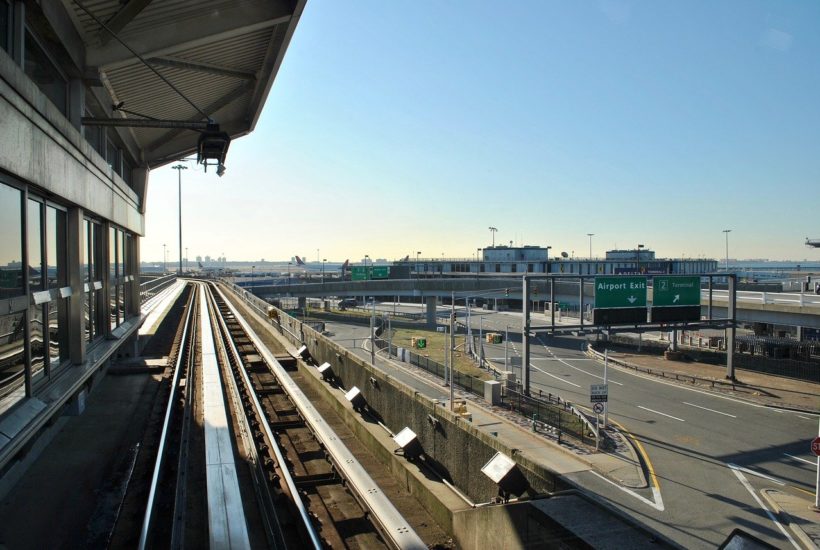Business
Infrastructure bill likely to contain a multitude of airport contracts
Every state in the U.S. has infrastructure priorities. The cumulative cost of just the ones that fall into the most critical category exceeds more than a trillion dollars. Congress is not expected to pass another trillion-dollar relief bill to cover these costs, but an infrastructure bill is expected to represent billions in funding.

Dozens of media reports flood our inboxes, and there are newspaper articles daily about the COVID relief bill that Congress is expected to pass very soon. How large will it be? What will the funding cover? When and how will the funding programs work? These are all good questions!
But, once we get the answers, the next hot topic to surface will be related to an infrastructure bill that Congress is expected to pass. What will it include? What type of projects will be covered? How will regions receive funding? How can contractors get involved?
Although we’ve been promised an infrastructure bill for the last several years, indications are strong that we will actually see one passed in 2021. That’s because U.S. infrastructure needs are immense. So large, in fact, that the country’s infrastructure must be addressed.
Many infrastructure needs are critical … critical to America’s economic vitality and our global leadership role and critical also to preserve public assets, confront the ravages of climate change, address water resources, and ensure the safety of American citizens. Infrastructure reform is expected to cover all basic systems and services that are needed to support a country’s economy and its citizens.
Every state in the U.S. has infrastructure priorities. The cumulative cost of just the ones that fall into the most critical category exceeds more than a trillion dollars. Congress is not expected to pass another trillion-dollar relief bill to cover these costs, but an infrastructure bill is expected to represent billions in funding. And, there is no requirement for the government to be the only revenue provider for infrastructure projects. Perhaps Congress will establish guidelines for more collaboration between the public and private sectors and some of the much-needed funding for large projects will come from the private sector. Without alternative funding of some sort, too many critical public projects will continue to languish.
Thousands of contracting opportunities connected to infrastructure projects are waiting to be launched in every infrastructure sector. Here are just a few examples of upcoming projects planned for just one vertical – airports.
Texas
Numerous airports in Texas have completed plans for large modernization and expansion projects. Bexar County has a number of airports with upcoming projects in the planning stages. Airport officials hope to construct an alternate runway at the Kelly Field near Port San Antonio. That project alone is projected to cost between $135 million to $180 million. A new terminal at San Antonio International Airport is on a high priority list as well, and costs for the terminal and enhancements to it would cost between $50 million to $100 million.
Austin has temporarily halted numerous airport projects that, before the pause on construction, were expected to represent more than a $4 billion spend. Houston’s George Bush International Airport has a need for a new or significantly upgraded light rail expansion that could represent costs of almost $1 billion. The Dallas Fort Worth International Airport has plans for a new terminal and numerous other expansion projects with millions of dollars in projected costs.
Even in the less populated areas of Texas, airports are critical components of economic growth and vitality. Officials at the Cuero Municipal Airport hope to sell 100 acres for development and then purchase another 40 acres for the construction of a new airport with a much longer runway. Expansion is not possible at the airport’s current location.
California
The Norman Y. Mineta San Jose International Airport’s Master Plan outlines projects that include a $6.8 million rehabilitation effort related to the Terminal A ramp. Additionally, there are plans to spend $900,000 on a biometric access control system for airline passengers and another $2 million to replace the Airport Noise Monitoring System and software that collects flight and operational data.
Ohio
Cleveland Hopkins International Airport officials are expected to unveil plans soon for a new terminal. The new design will include wider concourses, expansion of the ticketing area, a relocated rental car facility, centralized transportation options, enhanced security screening, redesigned entry roadways, and a new, centrally located customs facility. The cumulative cost projections are likely to exceed $1 billion.
Minnesota
Officials at the Mankato Regional Airport hope to add an air traffic control tower at a cost of $6 million. Mankato’s airport is the second busiest in Minnesota. Expectations are that continued passenger count growth will occur as a result of Minnesota State University’s pilot training program.
Washington, D.C.
In February, the U.S. Department of Transportation announced that approximately $2 billion in federal grant funding is available for airports affected by COVID-19. This funding is available to general-aviation airports in the National Plan of Integrated Airport Systems, and it may be used for new airport development projects provided the development costs are associated with combating the spread of pathogens and making airports safer for passengers.
Funding for airport projects is already available from many sources, and airports throughout the U.S. are top priorities. Expect an abundance of contracting opportunities at airports in 2021.
—
(Featured image by larsen9236 via Pixabay)
DISCLAIMER: This article was written by a third party contributor and does not reflect the opinion of Born2Invest, its management, staff or its associates. Please review our disclaimer for more information.
This article may include forward-looking statements. These forward-looking statements generally are identified by the words “believe,” “project,” “estimate,” “become,” “plan,” “will,” and similar expressions. These forward-looking statements involve known and unknown risks as well as uncertainties, including those discussed in the following cautionary statements and elsewhere in this article and on this site. Although the Company may believe that its expectations are based on reasonable assumptions, the actual results that the Company may achieve may differ materially from any forward-looking statements, which reflect the opinions of the management of the Company only as of the date hereof. Additionally, please make sure to read these important disclosures.

-

 Biotech2 weeks ago
Biotech2 weeks agoJohnson & Johnson’s Tecvayli Combo Shows Breakthrough Results in Multiple Myeloma
-

 Africa2 days ago
Africa2 days agoMorocco’s Rising Country Risk Profile Boosts Investor Confidence
-

 Cannabis1 week ago
Cannabis1 week agoTrump Signals Historic Shift: U.S. Weighs Reclassifying Cannabis from Schedule I to III
-

 Crypto6 days ago
Crypto6 days agoHyperliquid Proposes Burning $1B in HYPE to Make Supply Deflationary

























